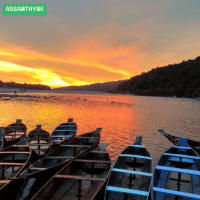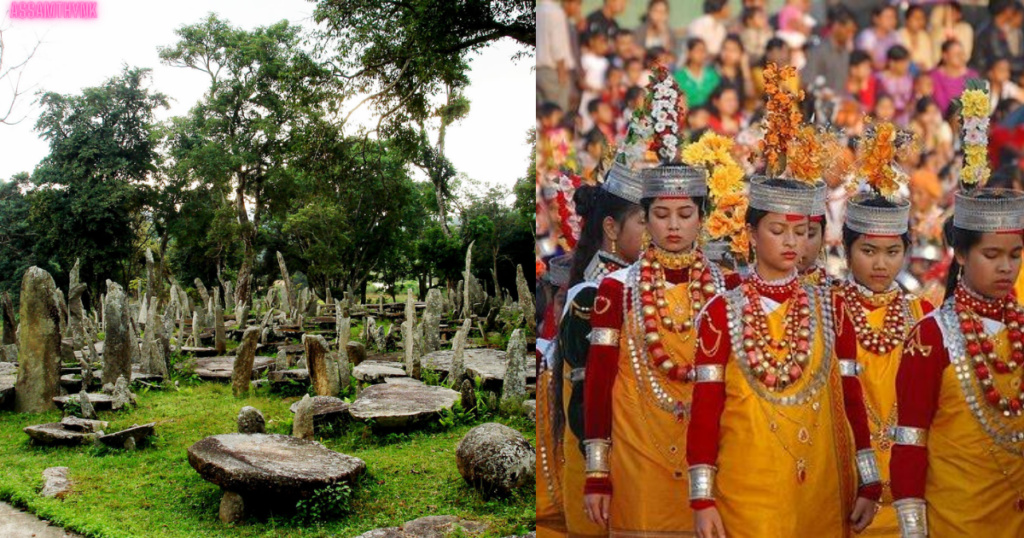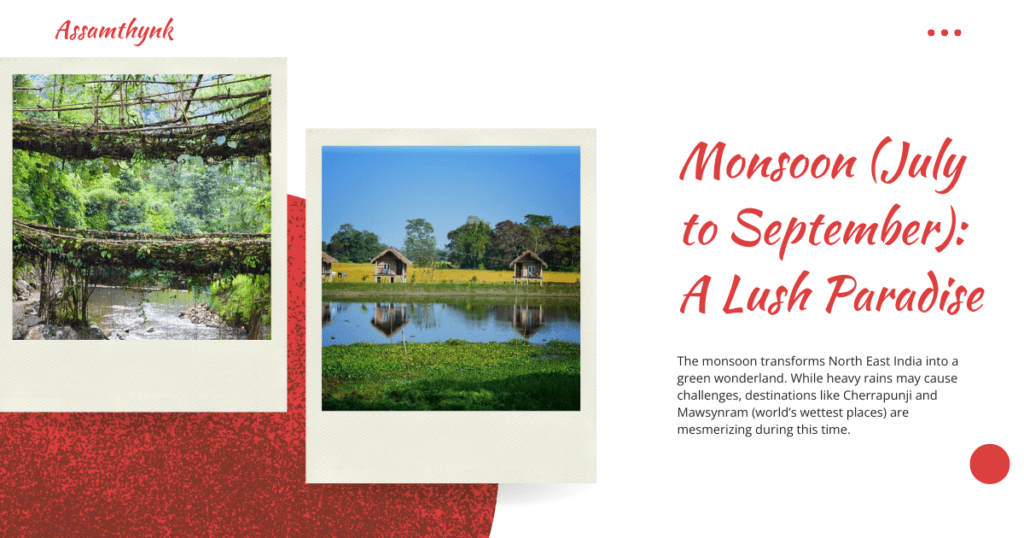Introduction
When people talk about North East India, one name often rises above the clouds—Meghalaya, literally meaning “Abode of Clouds.” Nestled between the lush hills and valleys, this magical state is not just a destination—it’s an emotion. I travelled to Meghalaya on a seven-day trip, and what I discovered was beyond just sightseeing—it was an experience of peace, adventure, culture, and raw nature.
I’ll take you through my personal journey of Meghalaya North East India tourism—including how to reach, what to explore, best places to visit, hidden gems, food, travel tips, and more.
Where Is Meghalaya and Why You Should Visit?
Tucked away in the northeastern part of India, Meghalaya borders Assam to the north and shares an international boundary with Bangladesh to the south. This enchanting state is home to misty hills, emerald forests, cascading waterfalls, and age-old tribal traditions that feel untouched by time.
So, why visit Meghalaya? Because it’s a land where clouds kiss mountaintops, rivers run crystal clear, and nature thrives in its purest form. Trek through living root bridges woven by hand, take a boat ride on the glassy waters of Dawki, wander through Asia’s cleanest village, or stand in awe at thunderous waterfalls like Nohkalikai. From the dramatic monsoon skies of Cherrapunji to the peaceful rhythms of rural Khasi and Garo life, Meghalaya offers a deep breath of fresh air—literally and spiritually.
How to Reach Meghalaya
Reaching Meghalaya is easy and scenic, especially if you’re travelling via Guwahati, Assam. The nearest major airport is Lokpriya Gopinath Bordoloi International Airport (Guwahati), well-connected to all major Indian cities. From there, Shillong—Meghalaya’s capital—is just a 3 to 4-hour drive away (around 100 km). You can book shared taxis, private cabs, or government buses right from the airport or Paltan Bazar.
Meghalaya’s own Umroi Airport (Shillong) has limited flights, mostly from Kolkata, and is about 30 km from Shillong city.
The state has no railway network, so the closest railway station is Guwahati Railway Station. From there, taxis or buses will take you up into the hills.
Once in Meghalaya, local travel is done via shared sumos, taxis, or rented cars/bikes. Roads are in good condition, and the drives through misty hills and pine forests are a treat in themselves—making the journey as memorable as the destination.
Top Tourist Places in Meghalaya (Must-Visit)
1. Shillong – Scotland of the East
Shillong, the charming capital of Meghalaya, is fondly known as the Scotland of the East due to its rolling hills, cool climate, and colonial-era charm. This vibrant hill station offers a perfect blend of natural beauty and cultural richness. The city is home to warm Khasi hospitality, bustling local markets, and serene landscapes.
Ward’s Lake, located in the heart of the city, is ideal for a quiet walk or paddle boating amid flower gardens. Shillong Peak, the highest point in the state, offers panoramic views of the city and surrounding valleys. Just a short drive away is Elephant Falls, a spectacular three-tiered waterfall surrounded by lush greenery.
For shopping and local experiences, Police Bazar is a must-visit. From handwoven Khasi shawls to bamboo handicrafts and spicy street food, it’s a sensory delight. Shillong serves as the gateway to Meghalaya and is the perfect starting point for any North East India tourism adventure.
2. Cherrapunji (Sohra) – Land of Mist and Waterfalls
Cherrapunji, locally known as Sohra, is famous for being one of the wettest places on Earth, making it a paradise of mist-covered cliffs, lush green landscapes, and roaring waterfalls. As I stepped into this magical town, the air was cool, the clouds were low, and the scenery was straight out of a dream.
The majestic Nohkalikai Falls, plunging from over 1,100 feet, took my breath away. Seven Sisters Falls, especially during the monsoon, looked like white ribbons falling from the sky. I also explored the mysterious Mawsmai and Arwah Caves, known for their limestone formations, fossils, and echoing silence.
For a peaceful escape, Eco Park offered stunning cliffside views of deep gorges and the Bangladesh plains beyond. Cherrapunji is not just about rain; it’s about nature in its most raw and untouched form. A must-visit for every nature lover exploring Meghalaya North East India tourism.
3. Nongriat – The Double Decker Living Root Bridge
My journey to Nongriat was the most adventurous and unforgettable part of my Meghalaya trip. Located deep in the forests near Cherrapunji, Nongriat is home to the world-famous Double Decker Living Root Bridge—a marvel of natural engineering where the roots of rubber trees have been trained over decades to form strong, living bridges.
To reach this hidden village, I trekked down over 3,000 steep steps from the Tyrna village. The descent was thrilling, passing through dense forests, bamboo groves, and hanging bridges over gushing streams. Every turn felt like walking into a living fairy tale.
Once I reached, the sight of the double-decker root bridge was surreal—thick, entwined roots forming a natural pathway over a river. I stayed overnight in a simple homestay, enjoyed freshly cooked Khasi food, and connected with friendly villagers who live in harmony with nature.
If you have more energy, trek another hour to the stunning Rainbow Falls, a turquoise pool beneath a powerful waterfall. Though the climb back up is tiring, the experience of Nongriat is worth every step. For those seeking nature, silence, and soul-touching beauty, this is a must-visit gem in Meghalaya North East India tourism.
4. Dawki – The Magical Transparent River
If there’s one place in Meghalaya that left me speechless, it was Dawki. Tucked near the India–Bangladesh border, Dawki is home to the Umngot River, famous for its glass-clear water. I had seen countless photos online where boats appeared to float in mid-air—but witnessing it in real life was surreal.
I reached Dawki early morning, when the water was calm and the sun softly lit the valley. The boat ride on the emerald green river was peaceful and dreamlike, surrounded by limestone cliffs, hanging roots, and echoing birdsongs. The best time to visit is from October to April, when there’s no rainfall and the water stays crystal clear.
After boating, I explored the Shnongpdeng village just upstream—a perfect spot for camping, cliff jumping, kayaking, and zip-lining. The local Khasi families offer homestays and meals, giving you a raw and intimate look at riverside village life.
What makes Dawki special is not just the river’s clarity, but the tranquillity that surrounds it. It’s a place where time seems to slow down. If you are planning a trip under Meghalaya North East India tourism, Dawki should be high on your list—because it truly looks like a scene from another world.
5. Mawlynnong – Asia’s Cleanest Village
Often hailed as Asia’s cleanest village, Mawlynnong is a tiny Khasi settlement that truly lives up to its title. Located about 90 km from Shillong, the village is a shining example of community-led cleanliness, eco-awareness, and rural tourism done right. The moment I entered Mawlynnong, I noticed bamboo dustbins at every corner, flower-laden pathways, and spotless surroundings.Mawlynnong
The villagers take immense pride in keeping their environment clean. Every home has a small garden, and even children are involved in sweeping the lanes. I stayed in a local bamboo homestay, surrounded by betel nut trees, chirping birds, and the scent of wildflowers.
One of the highlights was the Sky Walk, a bamboo watchtower that offers breathtaking views of the Bangladesh plains. I also visited the Balancing Rock, a mysterious natural wonder—a large boulder resting effortlessly on a smaller stone.
Mawlynnong is not just clean; it’s peaceful, spiritual, and incredibly welcoming. The slow pace of life, organic food, and genuine hospitality made it one of my most heartwarming experiences in Meghalaya North East India tourism.
6. Laitlum Canyon – The Edge of the World in Meghalaya
Hidden just 20 km from Shillong, Laitlum Canyon is one of Meghalaya’s best-kept secrets. The name “Laitlum” translates to “End of the Hills”, and standing on the edge of this vast canyon truly felt like being at the edge of the world. I reached just before sunset, and the golden light pouring over the hills made the entire valley glow like a painting.
The view stretches across endless green ridges, deep gorges, and scattered village trails. It’s peaceful, majestic, and strangely humbling. The strong mountain breeze, occasional drifting fog, and silence of nature make Laitlum a dream destination for photographers, trekkers, and peace-seekers.
Adventure lovers can trek down to the Raiot village, nestled deep in the valley—a long hike with jaw-dropping scenery. The locals also believe the canyon holds spiritual significance, adding to its quiet mystique.
There are no commercial shops or crowds here—just raw, untouched nature and breathtaking beauty. Bring your own snacks, wear comfortable shoes, and stay until the sun sets. Among all the places I explored in Meghalaya North East India tourism, Laitlum Canyon felt the most soul-stirring—like nature whispering to those willing to listen.
7. Sacred Forest of Mawphlang – Nature’s Temple in Meghalaya
Just a short drive from Shillong lies the mystical Sacred Forest of Mawphlang, one of the most spiritually and ecologically significant places in Meghalaya. Protected and revered by the Khasi tribe for centuries, this forest isn’t just a collection of trees—it’s a living heritage, a natural temple where every leaf, stone, and root is considered sacred.mawphlang
Before entering, I was guided by a local Khasi elder who explained the ancient rules: no one is allowed to take anything out of the forest—not even a leaf or pebble. It’s believed that doing so could invite misfortune, as the forest is protected by a powerful deity.
As I walked through the dense groves, I encountered moss-covered stones, ancient sacrificial altars, and trees that seemed to whisper stories of the past. The air was cooler, damper, and full of earthy aromas—completely untouched by modern pollution.
This sacred grove is also a biodiversity hotspot, filled with rare plants, herbs, and orchids. For those who appreciate indigenous culture, nature worship, and conservation, Mawphlang is a must-visit.
The Sacred Forest reminded me that in Meghalaya North East India tourism, nature and spirituality are deeply intertwined—respected, preserved, and honoured in the purest way.
Local Cuisine I Tried in Meghalaya
One of the best parts of my journey through Meghalaya was tasting its authentic Khasi cuisine. Every meal felt like a cultural experience — simple, earthy, and made with love.
The first dish I tried was Jadoh, a flavourful red rice cooked with pork, often served with pickled bamboo shoots and boiled eggs. It’s a staple in Khasi homes and absolutely delicious. Then came Dohneiiong, a rich pork curry simmered in a black sesame paste, giving it a smoky, nutty taste unlike anything I’ve had before.
A local favourite I was hesitant to try but ended up loving was Tungrymbai — a fermented soybean chutney, spicy and full of umami. Lastly, I tasted Pumaloi, a soft, steamed rice flour dish that’s light and often eaten with spicy meat curries.
If you want to truly experience Meghalaya North East India tourism, don’t miss out on its traditional food — it’s warm, comforting, and full of cultural depth.
Best Time to Visit Meghalaya
The best time to explore Meghalaya is from October to April, when the weather is cool, dry, and perfect for sightseeing, trekking, and outdoor adventures. During this season, places like Dawki offer crystal-clear river views, and festivals like Wangala and Cherry Blossom bring local culture to life. Monsoon months (June to September) transform the state into a green paradise with powerful waterfalls and lush landscapes, though travel may be difficult due to heavy rains. If you love rain and raw nature, monsoon is magical. But for smooth travel, winter and spring are ideal for Meghalaya North East India tourism.
Travel Tips for First-Time Visitors
- Always carry a raincoat/umbrella
- Wear good trekking shoes for root bridge hikes
- Avoid plastic – Meghalaya takes eco-tourism seriously
- Respect local customs (ask before photographing people)
- Cash is preferred in remote villages
- Pack warm clothes (nights can be chilly, even in March)
Most Instagrammable Spots in Meghalaya
Meghalaya is a paradise for travel photographers and Instagram lovers. The Umngot River in Dawki, with its glass-like water, offers unreal boat shots where boats appear to float mid-air. In Nongriat, a selfie on the iconic double-decker living root bridge is a must. Visit Shillong in November to capture the magical cherry blossom trees in full bloom. The bamboo skywalks in Mawlynnong give stunning views of the Bangladesh plains. Don’t miss the dramatic lighting inside Mawsmai Cave, where natural rock formations create surreal frames. Every corner of Meghalaya is a frame-worthy moment waiting to be captured.
FAQs about Meghalaya Tourism
1. What is the best time to visit Meghalaya?
October to April is ideal for sightseeing, trekking, and festivals. June to September is best for waterfall lovers, though heavy rain may affect travel.
2. How many days are enough for a Meghalaya trip?
A 5 to 7-day trip is perfect to cover Shillong, Cherrapunji, Dawki, Mawlynnong, and Nongriat.
3. Do I need a permit to visit Meghalaya?
No special permit is required for Indian citizens. Foreign nationals must register with local police within 24 hours.
4. Is Meghalaya safe for solo travelers?
Yes, Meghalaya is very safe, especially for solo and female travellers. The locals are friendly and helpful.
5. Can I rent a vehicle in Meghalaya?
Yes, cars and two-wheelers can be rented in Shillong for local sightseeing and longer trips.
6. What are some must-visit places in Meghalaya?
Shillong, Cherrapunji, Dawki, Mawlynnong, Laitlum Canyon, and Nongriat are top tourist spots.
7. Is English spoken in Meghalaya?
Yes, English is widely spoken, especially in towns and tourist areas.
8. What should I pack for Meghalaya?
Pack light woolens, rain gear, trekking shoes, and some cash (ATMs are limited in rural areas).
9. What are some local foods to try?
Must-try dishes include Jadoh, Dohneiiong, Tungrymbai, and Pumaloi. Most are pork and rice-based.
10. Is network and internet connectivity good in Meghalaya?
Mobile connectivity is good in Shillong and Cherrapunji. Remote villages like Nongriat may have poor or no signal.
Conclusion: Why You Must Visit Meghalaya
Meghalaya is not just another tourist destination—it’s a place that heals, humbles, and hugs you with its charm. Whether you’re standing under a roaring waterfall in Sohra, walking a living root bridge deep in the forest, or watching stars above Dawki — every moment in Meghalaya feels personal.
If you’re planning North East India tourism, don’t miss Meghalaya — the jewel in the crown of the Seven Sisters.


